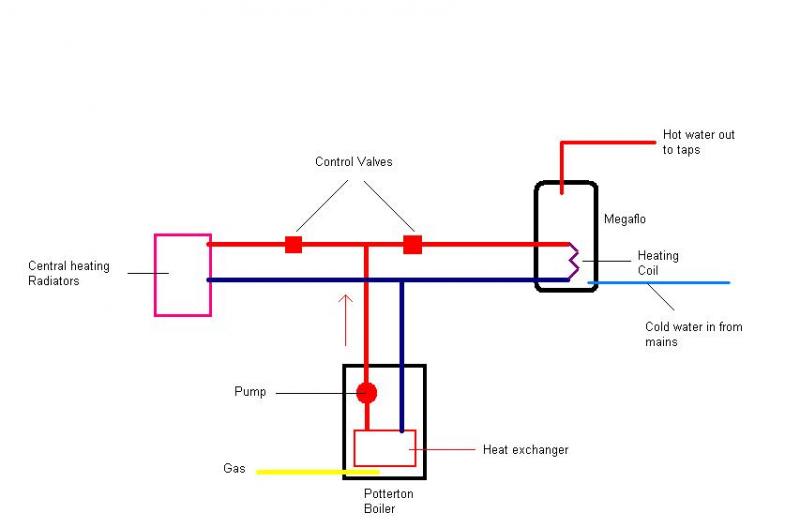Numpty alert!
I am from 'sunnier climes' where we don't have CH, & I have recently moved into a UK house where I don't get how the CH&HW system 'works' (though it does!).
We have, in the garage, a Potterton 'boiler' (thing with the pilot light). In the loft is a pressurised Megaflo. The 14 radiators are, apparently pressurised as well (the house is about 12 years old and the Megaflo is about 2 years old).
The Megaflo, we are told 'will heat up from cold in 30 minutes'. It has an electric switch which is kept off.
There is no other 'cylinder', like one in an airing cupboard, for instance.
So, what happens? Does the Megaflo heat the CH & HW water or does the gas flame in the Potterton? The water comes into the house off the mains, presumably passes through the Potterton, is heated then goes up to the Megaflo, then gets 'pressurised'? - and stored?
Do they mean, when they say that the Megaflo can heat up its tank of water in 30 mins that it means 'using the electric immersion'?
And- can or do you 'bleed' radiators in a sealed system?? I would think not!
Sorry about the simplistic nature of my question but I don't get it! I know how a pool chlorinator works, though!
I am from 'sunnier climes' where we don't have CH, & I have recently moved into a UK house where I don't get how the CH&HW system 'works' (though it does!).
We have, in the garage, a Potterton 'boiler' (thing with the pilot light). In the loft is a pressurised Megaflo. The 14 radiators are, apparently pressurised as well (the house is about 12 years old and the Megaflo is about 2 years old).
The Megaflo, we are told 'will heat up from cold in 30 minutes'. It has an electric switch which is kept off.
There is no other 'cylinder', like one in an airing cupboard, for instance.
So, what happens? Does the Megaflo heat the CH & HW water or does the gas flame in the Potterton? The water comes into the house off the mains, presumably passes through the Potterton, is heated then goes up to the Megaflo, then gets 'pressurised'? - and stored?
Do they mean, when they say that the Megaflo can heat up its tank of water in 30 mins that it means 'using the electric immersion'?
And- can or do you 'bleed' radiators in a sealed system?? I would think not!
Sorry about the simplistic nature of my question but I don't get it! I know how a pool chlorinator works, though!



